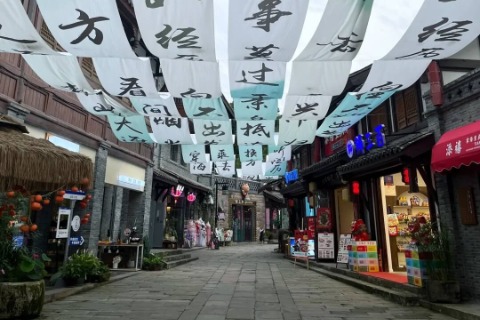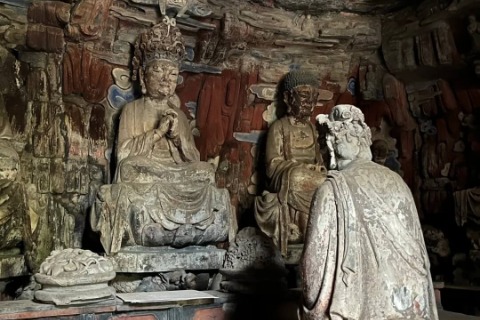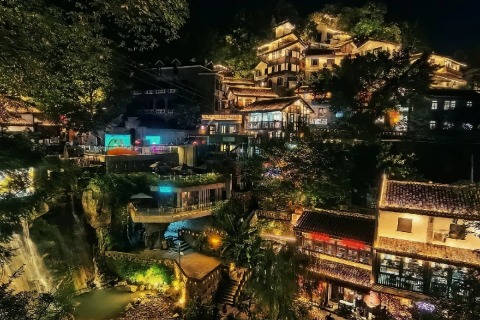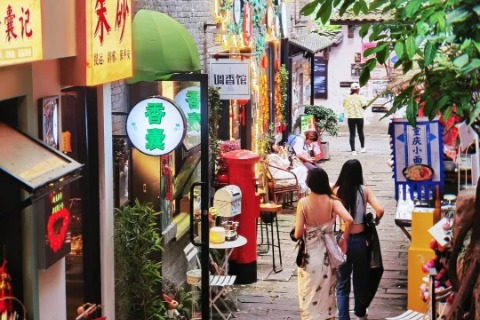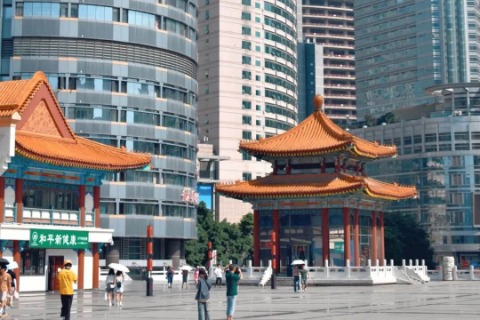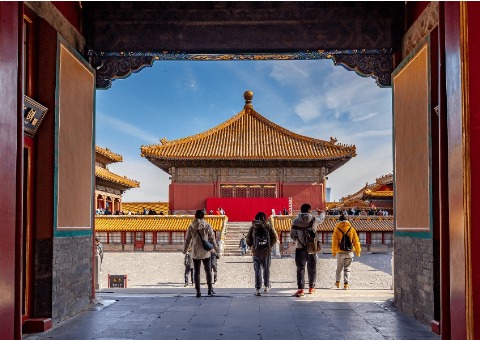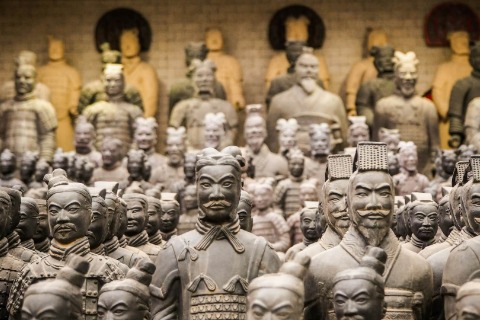Dazu Rock Carvings
One of the eight great grottoes in the world.
The Dazu Rock Carvings in Chongqing are one of the eight great grottoes in the world. In December 1999, they were listed as a UNESCO World Heritage Site, making them the only World Cultural Heritage in Chongqing. The carvings began during the Tang Dynasty in 650 AD, giving them over 1,300 years of history. They represent the pinnacle of grotto art from the 9th to 13th centuries and are a stunning achievement in human artistic expression. There are 74 locations with over 100,000 carvings, including more than 50,000 statues and over 100,000 inscriptions.
Notably, the Thousand-Hand Guanyin, Western Pure Land transformations, and Hell scenes from the Dazu carvings were featured in China’s first 3A game, “Black Myth: Wukong.” This allows players to immerse themselves in traditional Chinese culture within a virtual world. If you enjoy this game, the Dazu Rock Carvings are a must-visit destination for Chongqing travel.
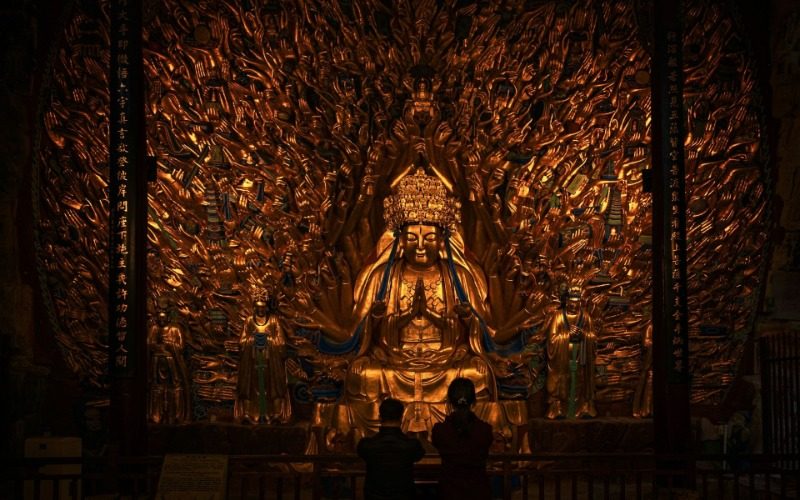
The Dazu Rock Carvings refer to all the stone sculptures in the Dazu District of Chongqing, including the Baoding Mountain carvings, Beishan carvings, Nanshan carvings, Shimen Mountain carvings, and Shizhuan Mountain carvings. The best-preserved and most famous part is the Baoding Mountain carvings, which attract the most visitors. Additionally, the Beishan carvings and the Dazu Rock Carvings Museum are popular areas for tourists.
Table of Contents
Highlights of Dazu Rock Carvings
Thousand-Hand Guanyin Statue (Chinese name: 千手观音像)
The most exquisite and representative carving in the Dazu Rock Carvings is the Thousand-Hand Guanyin statue. This statue is famous for its 1,007 hands and is one of the largest and most complete cliff carvings in the world that combines sculpture, gold leaf, and painting. It is carved on a cliff face that stands 15 to 30 meters high. Each palm of Guanyin has an eye depicted on it, and each hand holds a different sacred object.
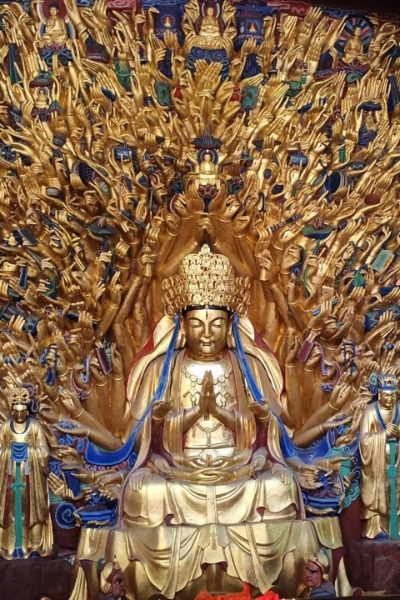
Amitabha Sutra (观无量寿佛经)
The Amitabha Sutra scene illustrates the revered Buddhist text of the Pure Land School, the “Amitabha Sutra.” The main focus of the work is the central depiction of three figures: Amitabha Buddha, Mahasthamaprapta Bodhisattva, and Avalokiteshvara Bodhisattva, collectively known as the “Three Saints of the West.”
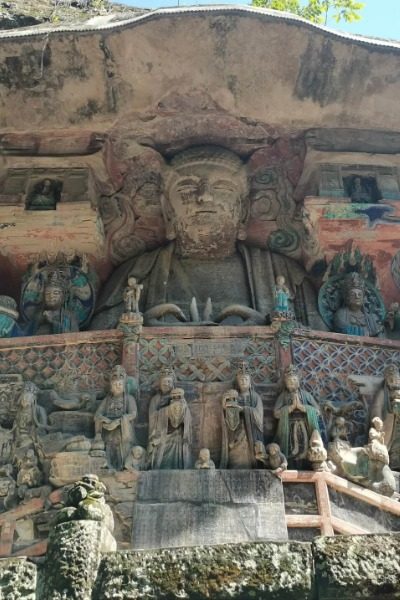
Three Holy Figures of Huayan (华严三圣)
The Three Holy Figures of Huayan refer to the statues of Vairocana Buddha, Samantabhadra Bodhisattva, and Manjushri Bodhisattva. The artisans skillfully handled the proportions and perspective, creating an effect where viewers feel the bodhisattvas are gently leaning down to watch over the sentient beings. Manjushri Bodhisattva holds a pagoda weighing about a thousand pounds, which remains stable after a thousand years, thanks to the craftsmen’s clever use of architectural principles.
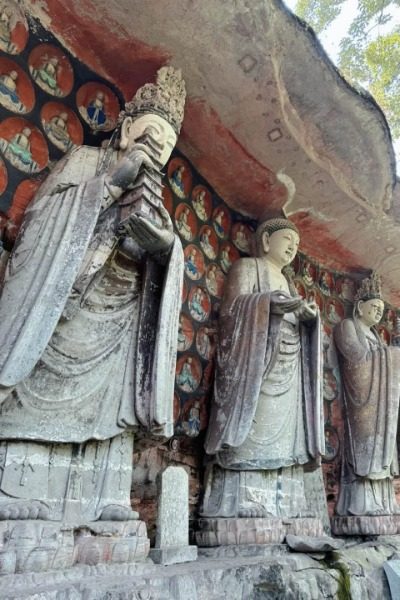
Hell Transformation Scenes (地狱变相图)
The Hell Transformation Scenes depict the horrors and punishments of hell in Buddhism, aiming to encourage good deeds and deter evil actions. The main section illustrates the eighteen layers of hell, along with various terrifying torture devices and punishment scenarios, such as the mountain of knives, cold ice, cauldrons of boiling oil, and limb severing. These images serve as a warning to people to do good and accumulate virtue, or they will face endless suffering after death.
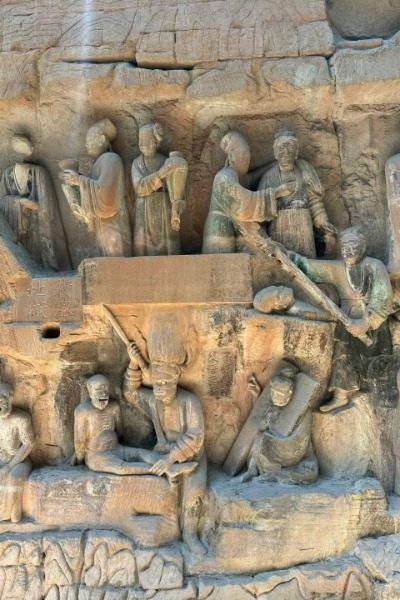
Sleeping Buddha (睡佛)
The Sleeping Buddha is 31 meters long and depicts Shakyamuni Buddha lying on his side on a cliff. His eyes are half open and half closed, conveying a serene and peaceful state that appears to be in between sleep and wakefulness.
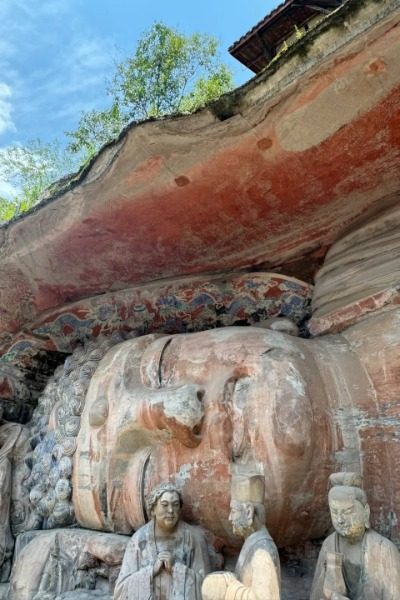
Wheel of Six Realms (六道轮回图)
Do you believe in an afterlife? This image illustrates the Buddhist concepts of “twelve causes and conditions, karma, and reincarnation.” The Buddha teaches that human desires lead to suffering, and all beings cycle through these six realms, evolving through endless pain.
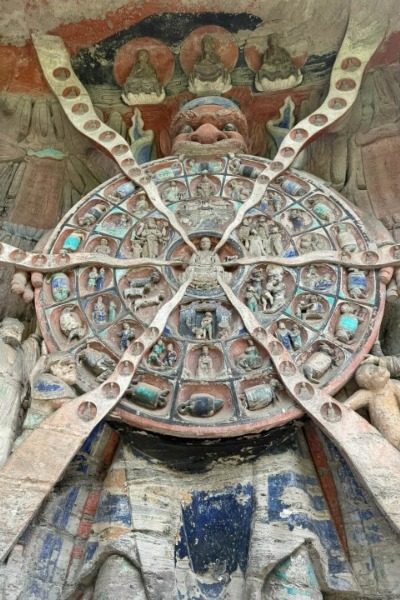
Sculpture Depicting the Deeds of Master Liu (柳本尊行化事迹图)
This group of sculptures not only showcases the achievements of Master Liu in his practice but also reflects the society’s faith and devotion to Esoteric Buddhism at that time. Through these vivid carvings, we can glimpse the popularity of Esoteric Buddhism in Sichuan during the late Tang and Five Dynasties period.
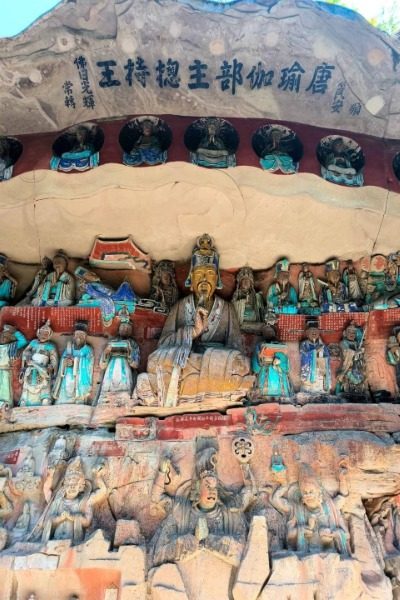
Dazu Rock Carvings Museum (大足石刻博物馆)
The Dazu Rock Carvings Museum is currently the largest professional cave temple museum in China. Its collection mainly features outdoor cave relics represented by the five mountains: Beishan, Baoding, Nanshan, Shimen, and Shizhuan. The museum is free to enter and does not require an appointment.
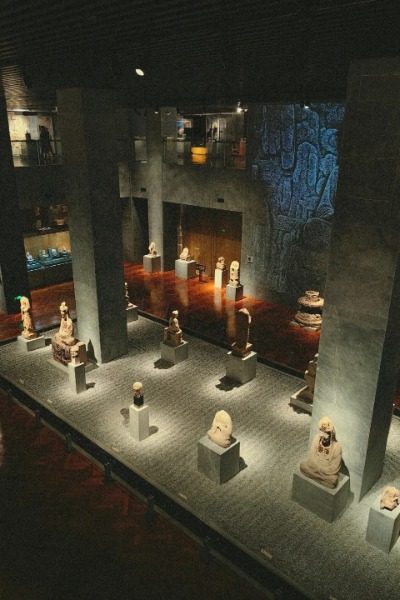
Practical Travel Tips
- The rock carvings are mainly divided into Baoding Mountain carvings and Beishan carvings, which are about ten kilometers apart. If you’re short on time, visiting Baoding Mountain is sufficient, as it contains the highlights.
- There are many mosquitoes along the mountain paths, so it’s advisable to wear long sleeves and bring mosquito repellent.
- Upon arrival, it’s recommended to visit the Dazu Rock Carvings Museum first, then enter the scenic area to see the carvings.
Q&A About the Dazu Rock Carvings
- What are the eight great grottoes in the world?
There are eight great grottoes worldwide, with five located in China: Dazu Rock Carvings, Dunhuang Mogao Caves, Longmen Grottoes, Yungang Grottoes, and Maijishan Grottoes. The other three are the Bamiyan Caves in Afghanistan, the Ajanta Caves in India, and Angkor Wat in Cambodia. - Why were the Dazu Rock Carvings built in ancient China?
The rise of the Dazu Stone Carvings is directly related to the An Lushan Rebellion at the end of the Tang Dynasty. After the rebellion, Tang emperors frequently fled to Sichuan for refuge, shifting the center of political activity south. During this period, Buddhism in northern China declined, losing the conditions for large-scale cave carving. In contrast, Sichuan was relatively stable and prosperous, providing a favorable environment for Buddhist sculptures. Wei Junjing, a local official from Shaanxi, captured Dazu after the rebellion and became its creator. Having fought many battles, he feared the consequences of his actions on his afterlife due to Buddhist teachings. He recruited a group of painters and craftsmen among the northern refugees and funded a large-scale carving project based on the Longmen Grottoes, incorporating local elements. - What is the cultural significance of the grottoes?
Grottoes are a unique architectural form of Buddhist culture. Indian grottoes are the birthplace of Buddhist grotto culture, opening the door for this culture to enter China and establishing its basic form. The content of the Dazu Grottoes primarily reflects Buddhism, but also includes Taoist and Confucian imagery, showcasing the fusion of multiple religious cultures.
Hours and Fees
Hours
- Daily from 9:00 AM to 6:00 PM. Ticket sales stop at 4:00 PM, and entry stops at 5:00 PM.
- Closed every Monday.
Admission
- The ticket for Baoding Mountain carvings is 115 CNY (approximately USD 16); the ticket for Beishan carvings is 70 CNY (approximately USD 10).
How to Get to Dazu Rock Carvings
By Bus
- From Chongqing Bus Station(重庆汽车站) or Chenjiaping Long-Distance Bus Station(陈家坪长途汽车站), take a direct bus to the Dazu Rock Carvings. Buses depart every 20 minutes, and the journey takes about 2 to 2.5 hours.
- From Chongqing West Station(重庆西站), there are dozens of buses to the Dazu Rock Carvings scenic area every day, with a travel time of approximately 2.5 hours.
By Subway
- There are no subway lines that go to the Dazu Rock Carvings.
How Visitors Rate the Dazu Rock Carvings
Local tourists from China
I highly recommend checking out the 4K and 8K introductory films about the Dazu Rock Carvings, especially the 8K dome display. It’s incredibly impressive and shows rock sculptures from areas we couldn't visit or that are still undeveloped. Strongly recommended!
The sculptures are exquisite, with vibrant colors and lifelike figures. The stone walls depict scenes of people practicing, raising children, and representations of heaven and hell, teaching the importance of doing good deeds. Aside from the large crowds, everything else was wonderful.
The carvings on Baoding Mountain are colorful and beautifully integrated into the mountainside, making them truly stunning. The Beishan carvings are a bit more strenuous, but there are many caves filled with numerous Avalokiteshvara statues. Listening to a guide provides a wealth of knowledge! It’s essential to hire a guide, or you might miss out on a lot of details. Both Baoding and Beishan require a guide!
Food prices in the scenic area are reasonable, but I still recommend bringing your own snacks. Exploring Baoding Mountain, the temple, and the museum takes about two hours, while it takes around an hour to walk through Beishan. The transportation between Baoding Mountain and Beishan can be a bit inconvenient. Overall, it was a delightful journey! Next time I come to Chongqing with my family, I would love to visit again.


